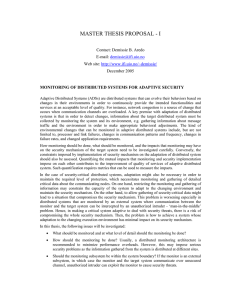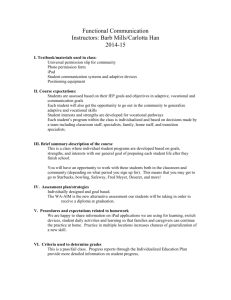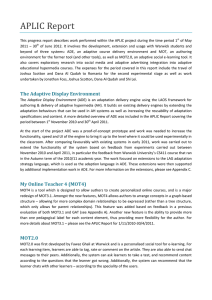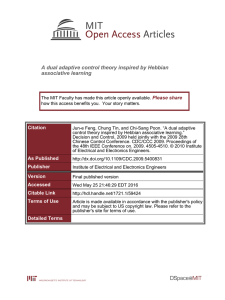"Potential Relationships between exposure situations and
advertisement
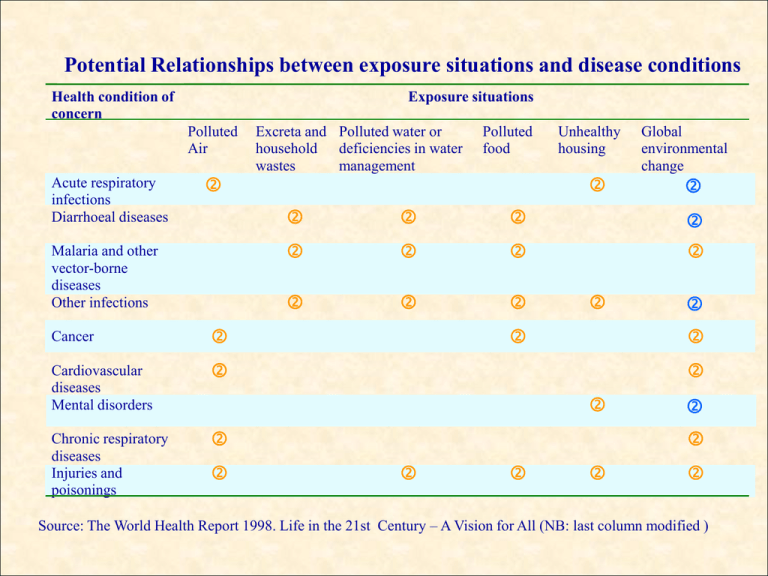
Potential Relationships between exposure situations and disease conditions Health condition of concern Exposure situations Polluted Air Acute respiratory infections Diarrhoeal diseases Excreta and Polluted water or household deficiencies in water wastes management Polluted food Malaria and other vector-borne diseases Other infections Cancer Cardiovascular diseases Mental disorders Chronic respiratory diseases Injuries and poisonings Unhealthy housing Global environmental change Source: The World Health Report 1998. Life in the 21st Century – A Vision for All (NB: last column modified ) Health and environment cause-effect framework Driving force Source Activities Traditional hazards Modern hazards Development activities Human activities Natural phenomena Emissions Pressure Environmental Concentration State Air Water Food Exposure Exposure External Exposure Dose Health Effects Effect Early/ Subclinical Moderate/ Clinical Advanced/ Permanent Soil A c t I o n s DPSEEA: Climate and Health Driving forces Population growth Development policies Exposure Effect Actions International agreements; National policies GHG emissions Pressure State Transport, Energy policies Global, national, monitoring Climate variability and change Heatwaves windstorms, floods, droughts Food, watervector-borne infections CVD Infectious Respiratory diseases Malnutrition Food shortage Air pollution Injuries Drownings Mental health National, international agency mitigation, adaptation strategies Treatment Human health impacts and vulnerability to climate change Water resources impacts Impacts on coastal areas Climate change Species and natural areas Agriculture impacts Forests impacts Adaptive Health impacts capacity Pathways by which climate change affects health Regional weather changes Climate Change •Heatwaves •Extreme weather •Temperature •Precipitation Health effects Temperature related illness and death Moderating influences Extreme weather related health effects •Contamination pathways •Transmission dynamics •Food availability •Migration Air pollution related health effects Water and food borne diseases Vector and rodent borne Diseases Psychological effects Adaptation measures Malnutrition Research Adapted from Patz et al, 2000 Causal web: Climate variability and diarrheal disease Unsafe and limited water Drought Hygiene difficult Nutritional deficiencies Contamination from pit latrines, septic tanks and sewage systems Climate variability Floods Debris and carcasses in rivers Failure of water treatment facilities Temperature increase Food spoilage Algal blooms Diarrheal disease Current and future actions: •Global, regional burden of disease assessment •Assessing early health impacts of climate change •National health impact assessment guidelines •National adaptation strategies for health •Pilot warning system projects (e.g. heatwaves) •Joint WHO/UNEP/WMO activities: Capacity building Information exchange Research promotion Adaptive actions for the health sector: primary adaptive measures: actions taken to prevent the onset of disease arising from environmental disturbances, in an otherwise unaffected population (e.g. supply of bed nets to all members of a population at risk of exposure to malaria, early warning systems, integrated environmental management) secondary adaptive measures: preventive actions taken in response to early evidence of health impacts (e.g. strengthening disease surveillance and responding adequately to disease outbreaks) tertiary adaptive measures: health-care actions taken to lessen the morbidity or mortality caused by the disease (e.g. improved diagnosis and treatment of malaria) Examples of primary and secondary adaptive measures to reduce health impacts Impact Primary adaptive measures Secondary adaptive measures Heat stress -Heatwave warning systems -Urban planning -Health personnel educated to detect and treat heat stress Extreme weather events -Disaster preparedness and mitigation -Early warning systems -Disaster protection measures -Disaster response Infectious -Integrated environmental diseases management -Disease surveillance and monitoring -Control of vector-, food- and water- borne diseases Examples of primary and secondary adaptive measures to reduce health impacts Impact Primary adaptive measures Secondary adaptive measures Food security -International mechanisms of agriculture, trade and finance -Seasonal climate forecasting -Famine early warning systems -National and local agriculture measures -Monitoring and surveillance -Implementation of nutrition action plans Water -Pollution reduction and control policies -Demand management and water allocation policies -Waste water treatment -Economic and regulatory measures to increase irrigation efficiency -Capacity building -Monitoring and surveillance -Capacity building climate Change and Adaptation Strategies for Human health (cCASHh) Outreach V ulnerability of V ector B orn E pidemiologal Evaluation WHO LSHTM A E xtreme W eather E vents , D iseases , of W ater F ood born D iseases ssessment to E conomic A ssessment P olicy A nalysis I ntegrated A ssessment Feem WHO ICIS dWd NIPH SU dWd Framework for adaptation Pik Current available datasets, Monitoring results Research results

